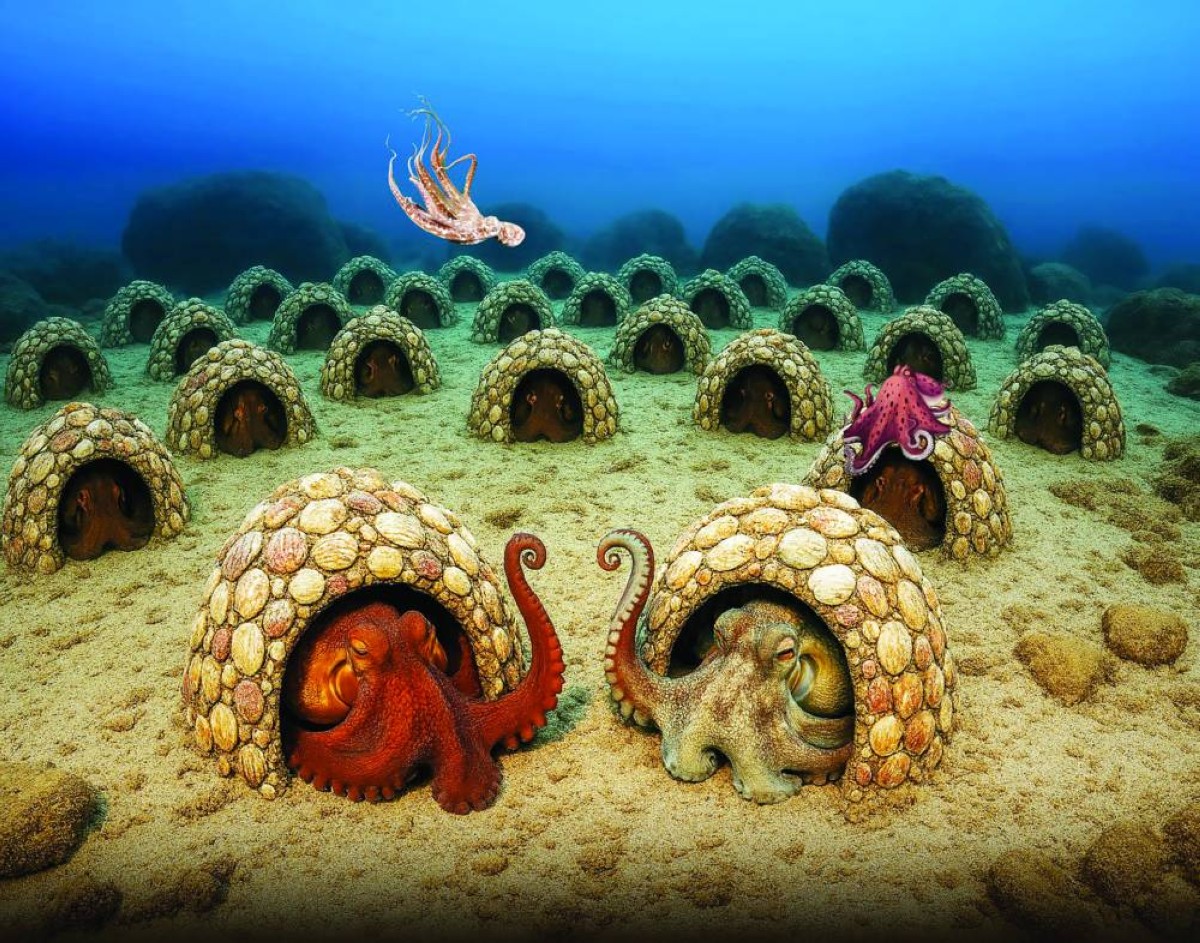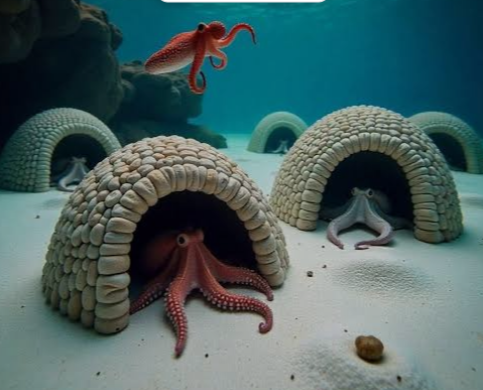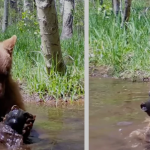Octlantis: The Underwater Neighborhoods of Octopuses

Off the coast of Jervis Bay, Australia, scientists have uncovered something unexpected: Octlantis. This patch of seafloor has turned out to be an octopus community unlike anything we previously imagined. Octopuses, typically thought of as solitary creatures, have been found living in close-knit groups, building dens from shells, and even engaging in social behaviors that suggest a complex and surprisingly communal way of life. Until now, we believed octopuses were mostly loners, preferring solitary lives away from other creatures. However, in Octlantis, scientists discovered something different. Cameras caught these cephalopods engaging in a variety of social interactions: mating, signaling to each other, defending their dens, and even evicting neighbors from choice spots. This behavior is much more complex than the isolated existence we had once assumed.
Until now, we believed octopuses were mostly loners, preferring solitary lives away from other creatures. However, in Octlantis, scientists discovered something different. Cameras caught these cephalopods engaging in a variety of social interactions: mating, signaling to each other, defending their dens, and even evicting neighbors from choice spots. This behavior is much more complex than the isolated existence we had once assumed.
Octlantis isn’t the only place where octopuses have been found living in close proximity. An earlier discovery at a site called Octopolis also revealed clusters of octopus homes built around piles of shells. In both places, the octopuses have constructed dens by digging into heaps of prey shells. Over time, these shell mounds have altered the seafloor landscape, essentially turning the area into a thriving neighborhood, with shelters, pathways, and even some territorial squabbles. Scientists believe these social clusters form when food is abundant and safe places to live are hard to come by. The octopuses appear to have found an ideal way to coexist, despite the occasional quarrels over the best dens. Their behavior in these environments closely resembles a small town—complete with interactions, competition, and even the occasional house move.
Scientists believe these social clusters form when food is abundant and safe places to live are hard to come by. The octopuses appear to have found an ideal way to coexist, despite the occasional quarrels over the best dens. Their behavior in these environments closely resembles a small town—complete with interactions, competition, and even the occasional house move. The discovery of Octlantis challenges what we thought we knew about octopus behavior. These animals, known for their intelligence, creativity, and now, surprising social habits, continue to amaze us. The ocean, as it turns out, still holds many secrets, and some of its best surprises are found at the very bottom.
The discovery of Octlantis challenges what we thought we knew about octopus behavior. These animals, known for their intelligence, creativity, and now, surprising social habits, continue to amaze us. The ocean, as it turns out, still holds many secrets, and some of its best surprises are found at the very bottom.











